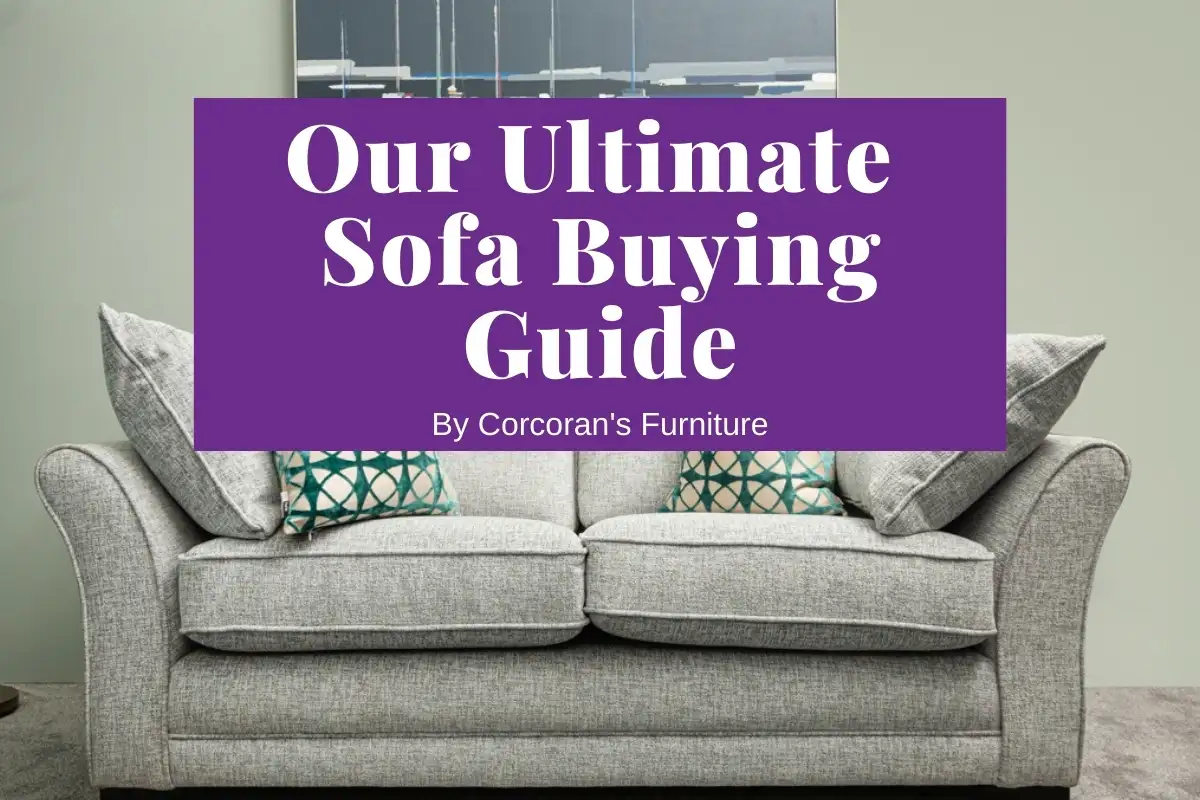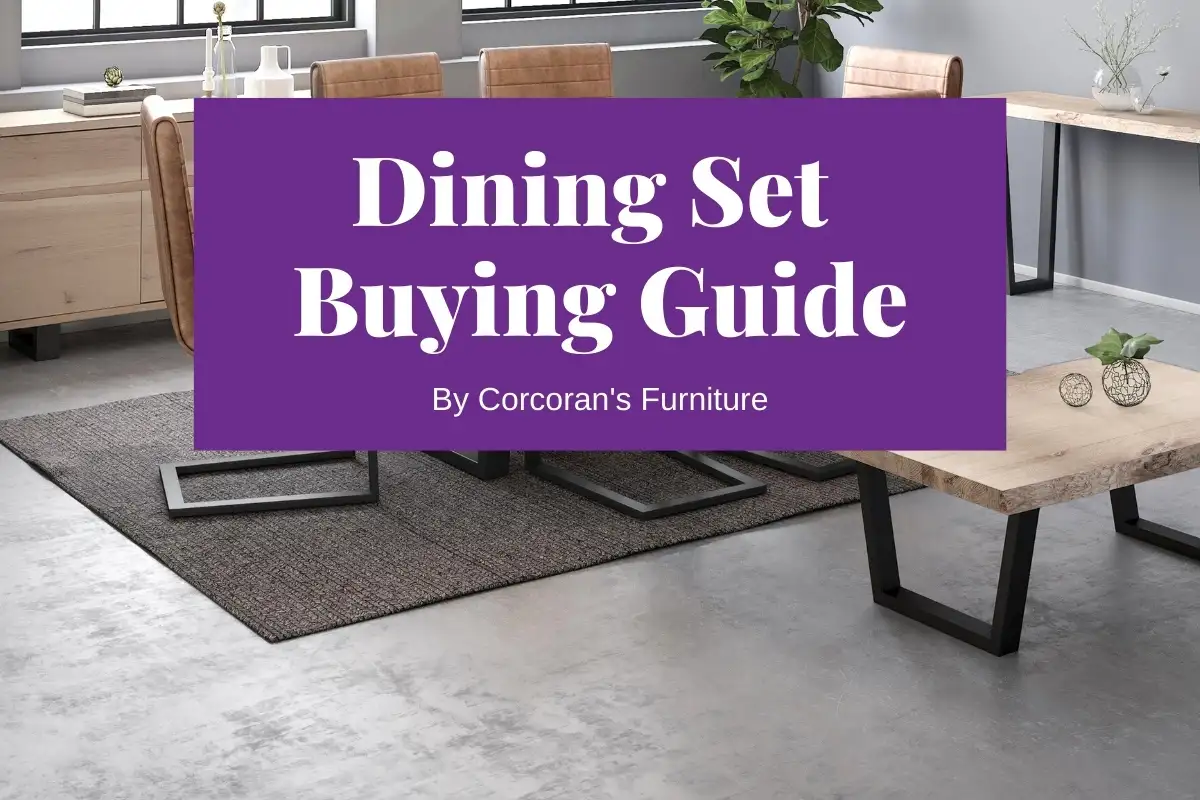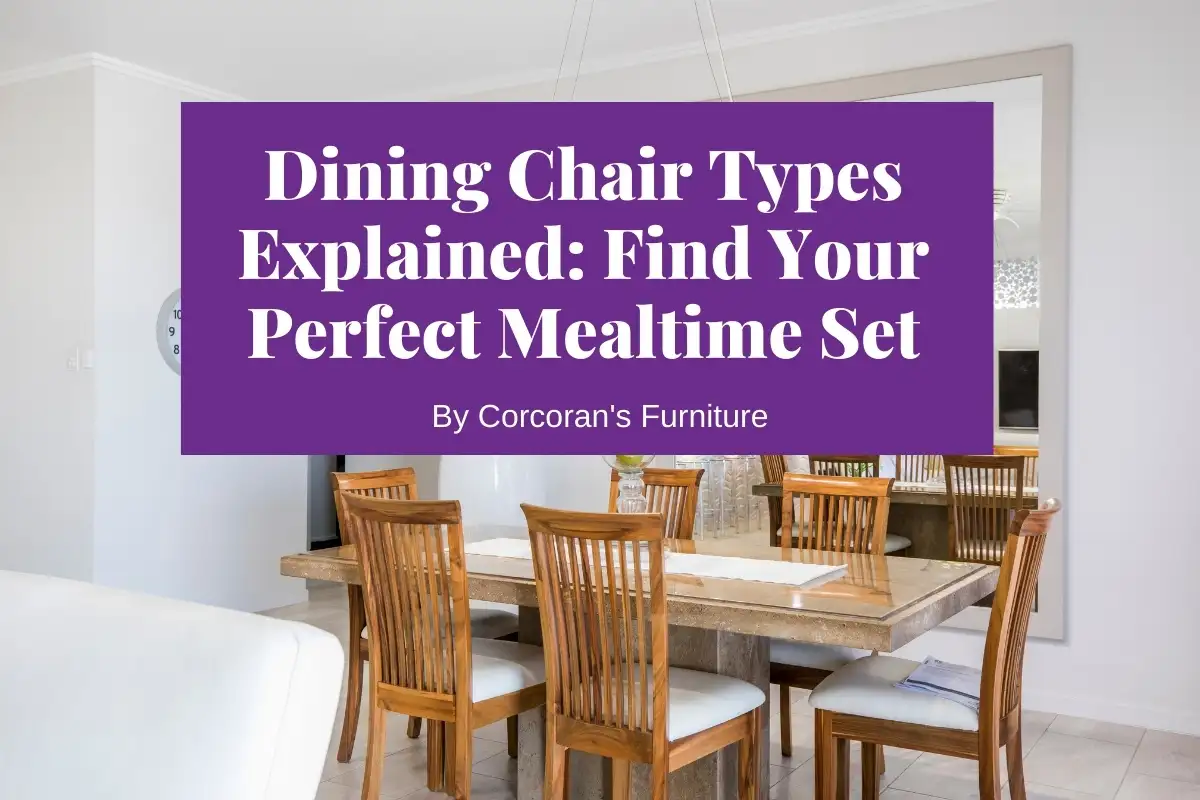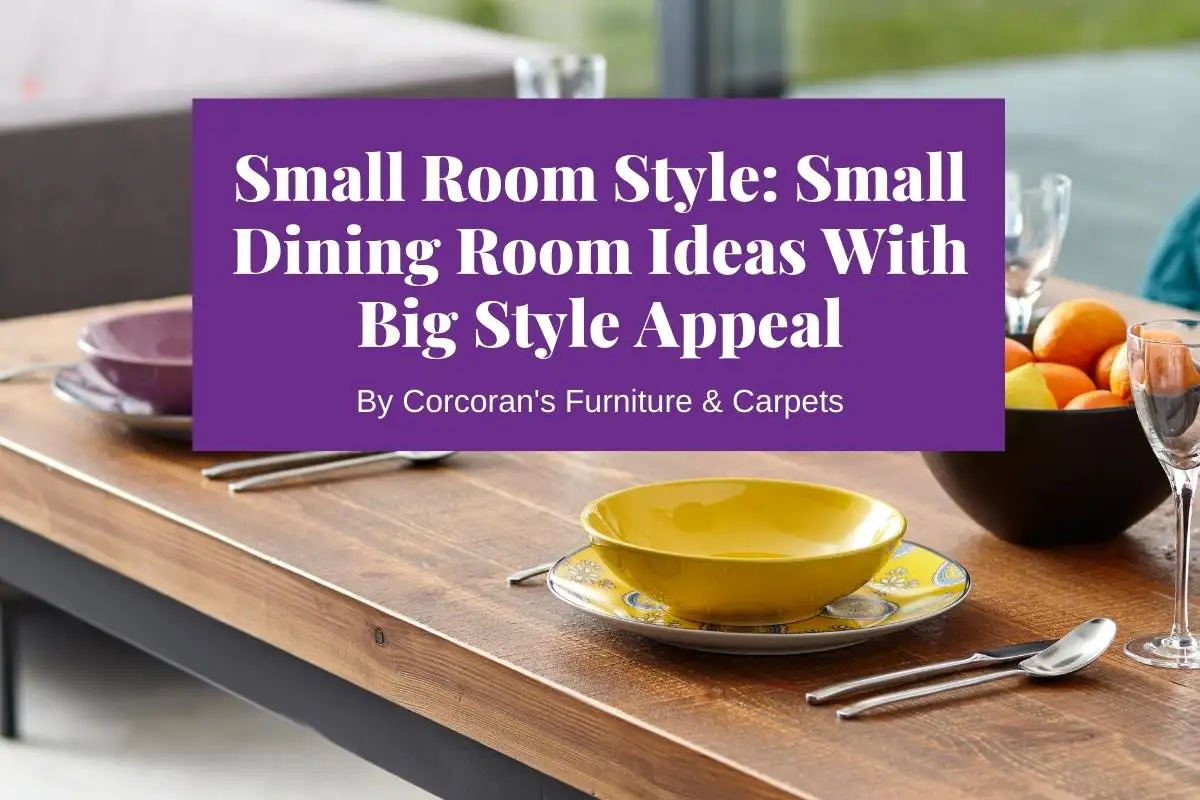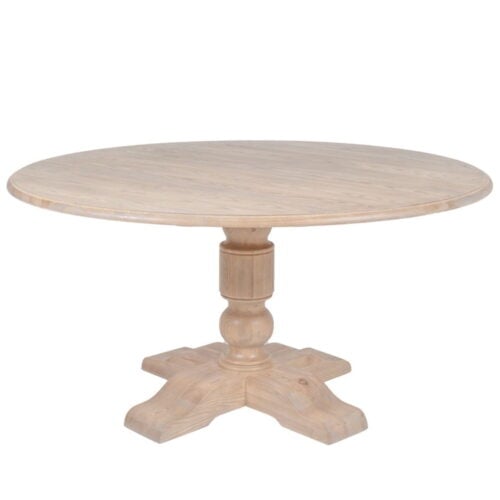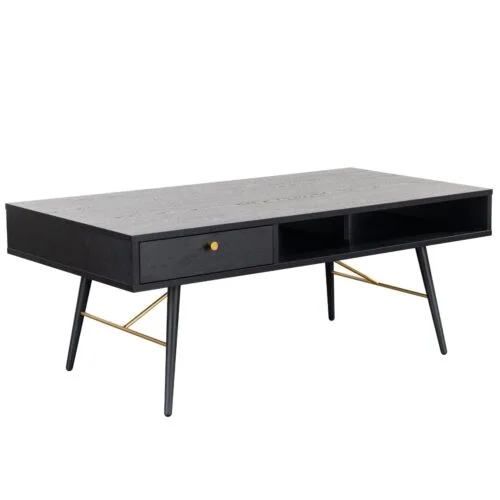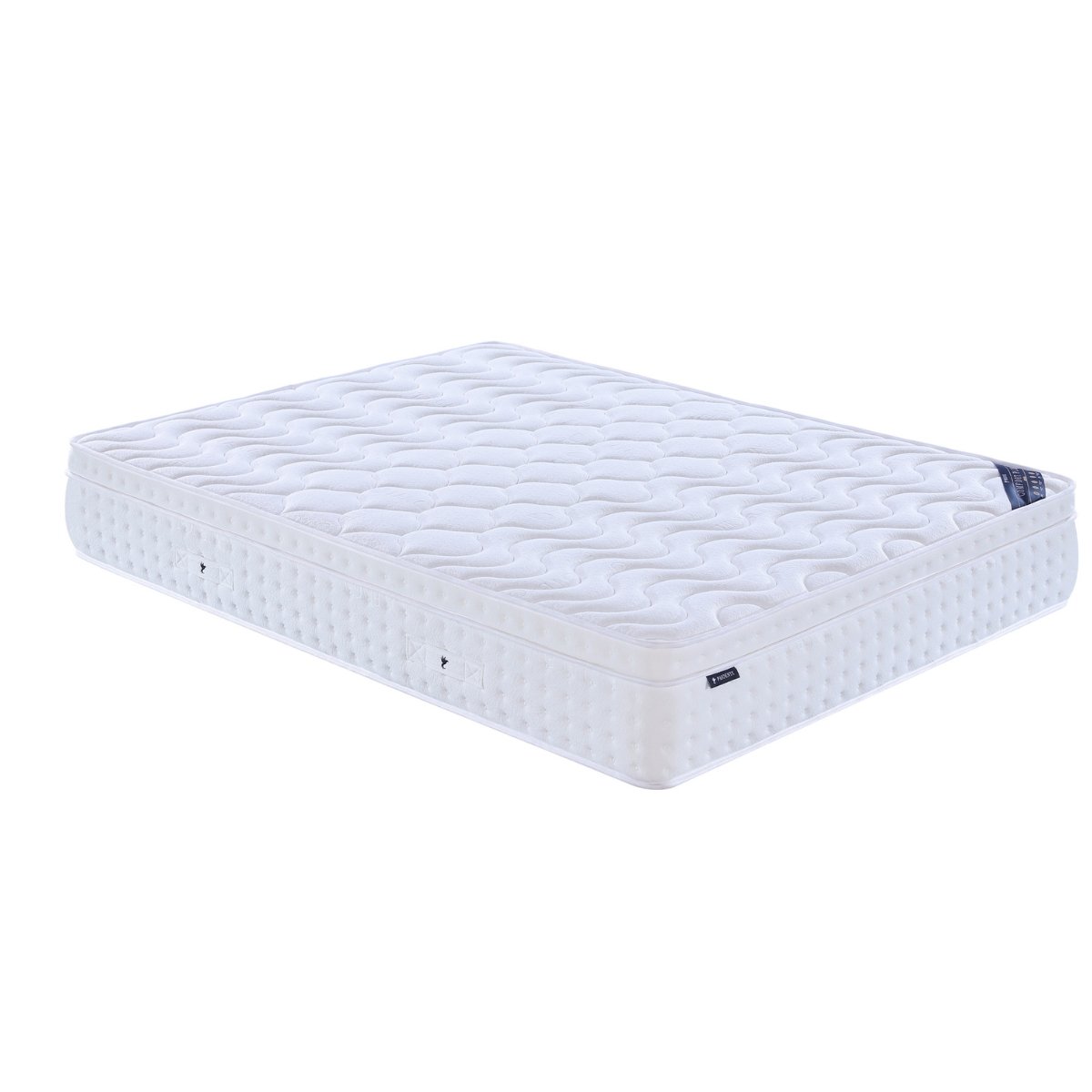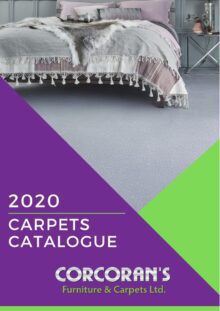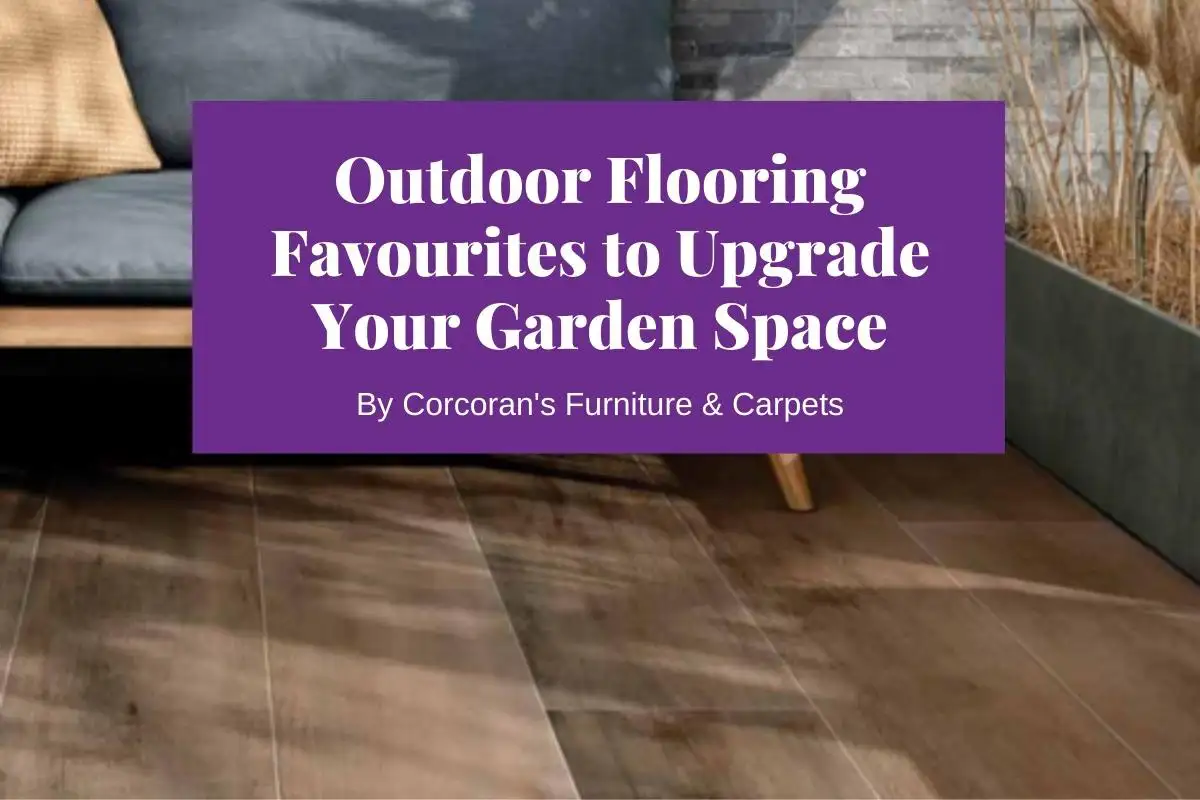Buy Sofas You Love With Our Ultimate Sofa Buying Guide
Sofas are one of the largest and most diverse categories of furniture. There are thousands of styles, materials, colours, and shapes to choose from, and a plethora of details that make each one unique.
If you’re the indecisive type, you could spend hours poring over catalogues and swatches, but wouldn’t you rather choose your new couch with ease and spend that time relaxing on it with a cup of tea and a good book? That’s why we’ve put together the ultimate buying guide to take the stress out of your sofa search.
If you’re ready to get into the nitty-gritty and learn everything there is to know about loveseats, leather, and lawsons, read on.
We’ll kick off by assessing your needs and personal preferences before taking a look at the importance of quality sofa construction and sofa materials. Next, we will look at the most popular sofa types, designs, and styles, followed by a look at budgeting and pricing considerations.
Finally, after looking at where to buy the best sofas, we’ll finish off with a few pointers to help you comfortably make your final sofa decision.
Assessing your needs and personal preferences
It is essential to consider factors such as your lifestyle, room layout, and design preferences to make an informed decision. In this section, we will be looking at just that.
By identifying your needs and personal preferences, you’ll be on track to confidently choosing a sofa that not only meets your aesthetic expectations but also provides the perfect combination of functionality and comfort for your living space.
Considering your space: space and room dimensions
First thing’s first, before you get ready to buy sofas, you have to think about the space where the sofa will go. Knowing your room dimensions and having enough space for your sofa is key.
A massive, ten-piece sectional with ottomans, footrests, and recliners with all the bells and whistles might be a chill-out dream, but if you’re in a small space, you don’t want to buy sofas that will leave no room to move around the room.
On the flipside, unless you’re an ultra-minimalist, a single, narrow loveseat is probably not the right pick for a huge, open-plan sitting room.
Once you’ve found a sofa you like, you’ll use the exact measurements to make absolutely sure it will fit. Of course, you need to make space to walk between your furniture and extend footrests if you want a sofa that has one, but also consider the furniture and details around it.
Make sure that any console table sideboard nearby has space for drawers to open. Look at the entryway to the room and ensure there’s room for doors to swing inward.
Don’t just measure the size of the room and your sofa; measure those entryways as well! Ideally, the measurements of the sofa you choose should be at least 10 cm smaller than your doorway’s width in order for it to fit through smoothly (although some sofas do have workarounds for this, like pieces that can be disassembled until it’s safely inside the room).
Once you’ve got an idea of what size couch will work for your room, you’re ready to make some decisions about the sofa itself.
Sofa size and seating capacity
One of the main considerations when you want to buy a sofa is how many people you want it to seat. Of course, this depends on your lounging style (and whether you’re willing to share cushion space with anyone else), but as a rough guide:
- Standard sofa: 3-4 people
- Loveseat: 2 people
- Corner or Sectional Sofa: 3-4 to 5+ people (varies)
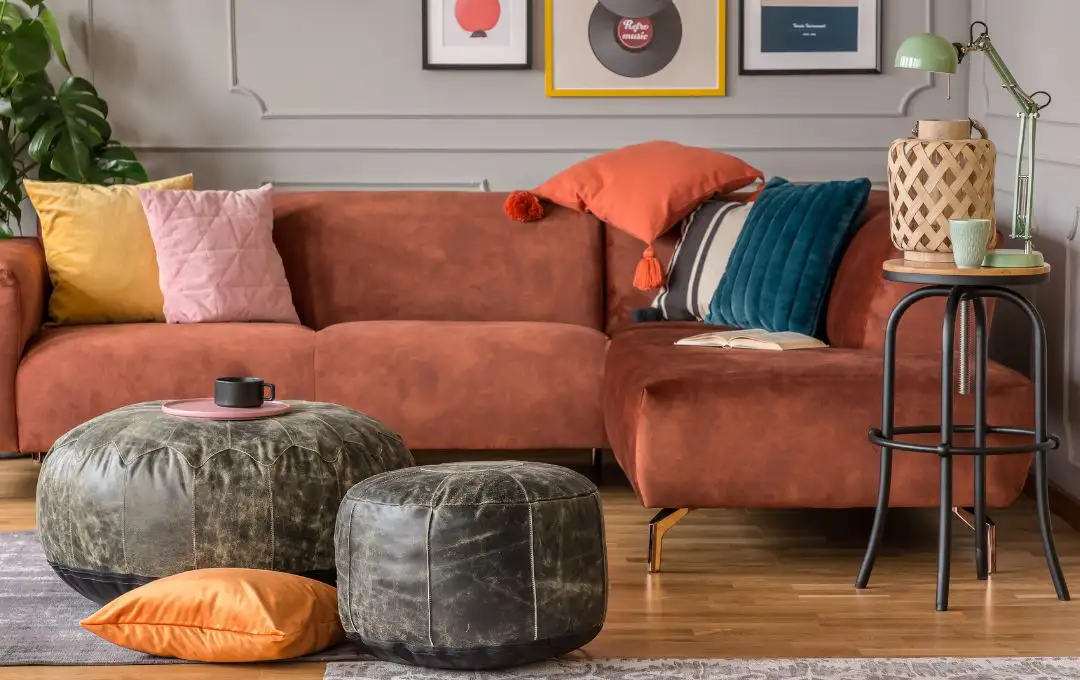
Style Preferences
Style preferences, personal tastes, and your existing decor combine to play a key role in your choice of sofa, strongly influencing the overall aesthetic and atmosphere of your living space. For instance, traditional styles with their classic elegance and intricate detailing are a great choice for those who appreciate timeless designs.
In contrast, modern styles are typically best suited to those with a penchant for clean lines and minimalist aesthetics. We will explore sofa types, styles, and design types in greater detail later in this guide, but for now, it’s important to know that ultimately, the choice of a sofa should be in harmony with the individual’s unique taste while complementing the existing decor to create a cohesive and inviting environment.
Comfort and functionality
Achieving a balance between comfort and functionality is key when it comes to choosing the perfect sofa for any living space. If you frequently have overnight guests or are just all about maximising your space, you might consider a sofa bed or daybed. A sofa bed is a couch that folds out into a bed (usually with a double-size mattress), while a daybed features a mattress cushion as its base and is generally single-mattress size. Both can be great options for double-duty performance and multifunctionality that welcome visitors while still offering style for your living space.
For those seeking high comfort levels, cushion firmness plays an important role, with the option to choose from either plush or firm seating surfaces depending on your individual preferences.
Additionally, the choice between reclining or stationary sofas depends on the intended use and desired versatility. Reclining options offer heightened relaxation, and stationary options tend to provide a more formal seating arrangement.
Understanding sofa materials and construction
In this section, we’ll look at the different materials and construction methods used in the world of sofas. Understanding these components is essential for making informed decisions when buying or maintaining a sofa. We will look at the various materials, their properties, and the key factors to consider during the construction process to ensure both comfort and durability.
All about upholstery: Choosing the perfect upholstery material for your sofa
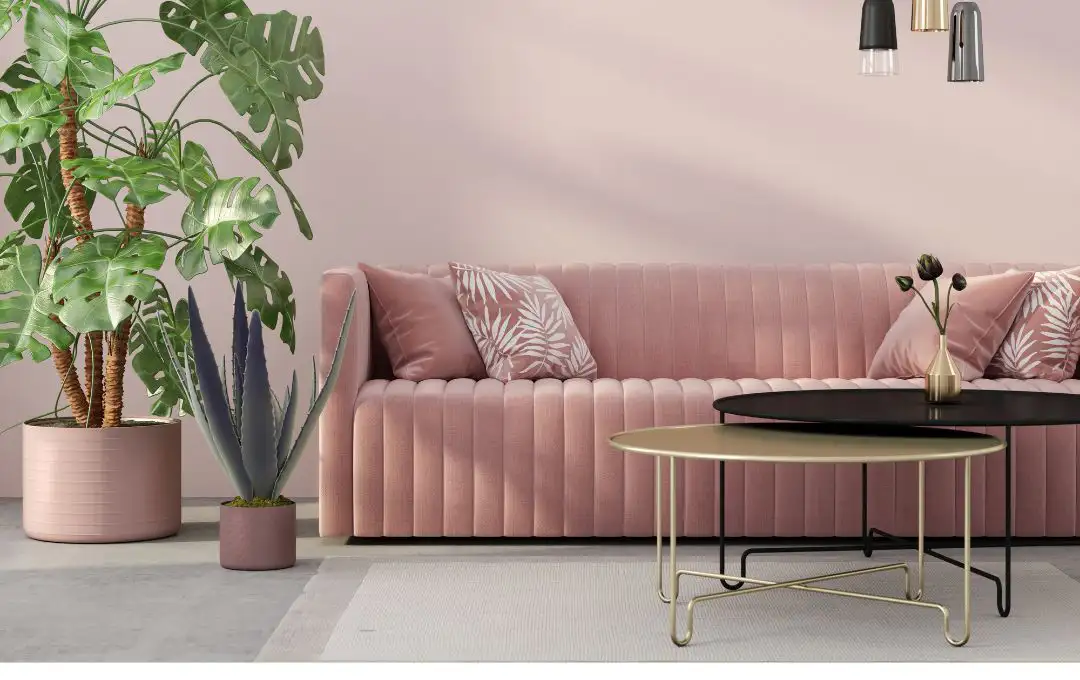
Upholstery fabric is where you as a customer and budding interior design superstar will probably have the most creative licence in choosing your perfect sofa. While some sofas are designed with a singular look in mind, it’s not uncommon for many pieces to have a medley of options for fabric type and colour.
As we mentioned above, if you buy sofas with strong frames they can be reupholstered if the fabric pills over time, picks up stains, or is subjected to other wear and tear. However, you naturally don’t want to be worrying about repairs for a long time after you invest in a new furniture piece, so picking a quality fabric is a key factor in sofa-buying.
Cotton
Cotton needs very little introduction. This soft, natural fabric is breathable and comfy for relaxed seating. It’s best for cushions with removable covers that can be washed as it can be prone to wrinkling or stains.
Linen
Linen is another great natural option that’s a bit more durable than cotton. It’s also breathable and, even better, hypoallergenic. It does also get wrinkly, but in a lovely, natural way that can look soft and inviting.
Wool
Wool, on its own or in a blend of materials, creates a cosy feel for your living room. Wonderful for both warm and cold climates, wool is one of the most versatile options for upholstery fabric, bolstered by a huge variety of colours.
Polyester
Polyester is a synthetic star for sofas. Super-durable and available in a variety of colours and textures, it promises long-lasting appeal. Buy sofas upholstered with polyester especially for homes with kids and/or pets.
Velvet
Velvet is generally made from cotton or polyester, and the deep pile fabric brings warmth and glam to your room. It is a little more high-maintenance, in exchange. If you buy sofas made with velvet, you’ll have to do a little more cleaning, but you’ll enjoy a lot more glamour.
Microfibre
Microfiber fabric is usually made from polyester, and offers a durable, synthetic version of suede that’s especially good for pet owners because it is extra-resistant to stains and scratches. You can learn all about our top dog-friendly couch materials here.
Leather
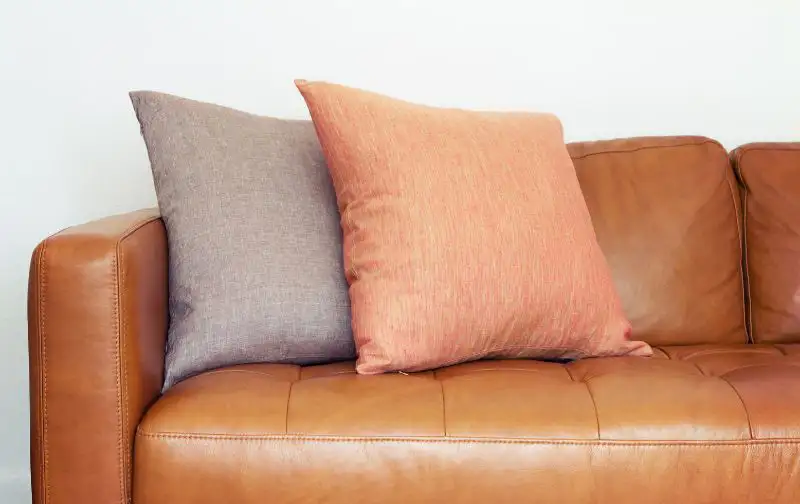
Leather is believed to be the first fabric crafted with human hands and is one of the most popular materials for sofas—and for good reason. Buy sofas upholstered in leather and get durability, easy maintenance, and of course, amazing looks. Leather is a fabulous pick for most sofa aesthetics, whether it’s a squishy, comfy recliner or a sleek, tightly-upholstered tuxedo.
The sofa frame comes first
Everything begins with a frame. When you buy sofas, you want them to last. You may be able to reupholster your sofa after years of wear and tear, but the frame is forever, so it’s important to consider your options carefully when it comes to selecting wooden versus metal frames, for instance.
Hardwood and softwood frames
Hardwood and softwood frames are popular choices for sofa construction due to their durability, versatility, and natural aesthetic. Dense hardwoods like teak, maple, and walnut are the strongest but also much more expensive than softwoods such as pine and fir. Furniture-grade plywood also offers a good balance between economy and quality.
Metal frames
Metal frames are another option for sofa construction. Offering a combination of durability and a sleek, contemporary aesthetic, common metals used include stainless steel, aluminium, and iron. While there’s no denying they can be more costly alternatives, they provide a strong foundation for your sofa that should stand the test of time.
Plywood and particle board
Furniture-grade plywood and particle board offer a more budget-friendly choice for sofa frames, offering a good balance between affordability and quality. These don’t tend to be as strong as hardwood or metal options, but can still provide a hardy structure for your sofa, particularly when constructed with proper reinforcement and attention to detail.
Suspension systems
Next comes the suspension. The reason some sofas are so comfy doesn’t just come down to the cushions, but also the springs beneath them. According to the New York Times, most sofas utilise a sinuous spring system that helps cushions keep their shape and provides support as you sit. There are also coil spring systems similar to what you would find in an innerspring mattress, and some sofas even use a polypropylene webbing system that is light and affordable yet still strong.
Leg construction
Let’s talk about legs: sofa legs (sometimes called sofa feet) are almost always made of wood or metal and can be round, square, triangle, or wedge-shaped. They may attach to the sofa with screws or brackets, and when buying a sofa you should definitely check to ensure that the legs are firmly attached and don’t wobble.
Also, if you have hardwood floors, when you buy sofas you want to ensure that the legs won’t leave scratches—you can always cap them with carpeting or scratch-resistant covers, but it’s something you’ll want to take care of sooner rather than later.
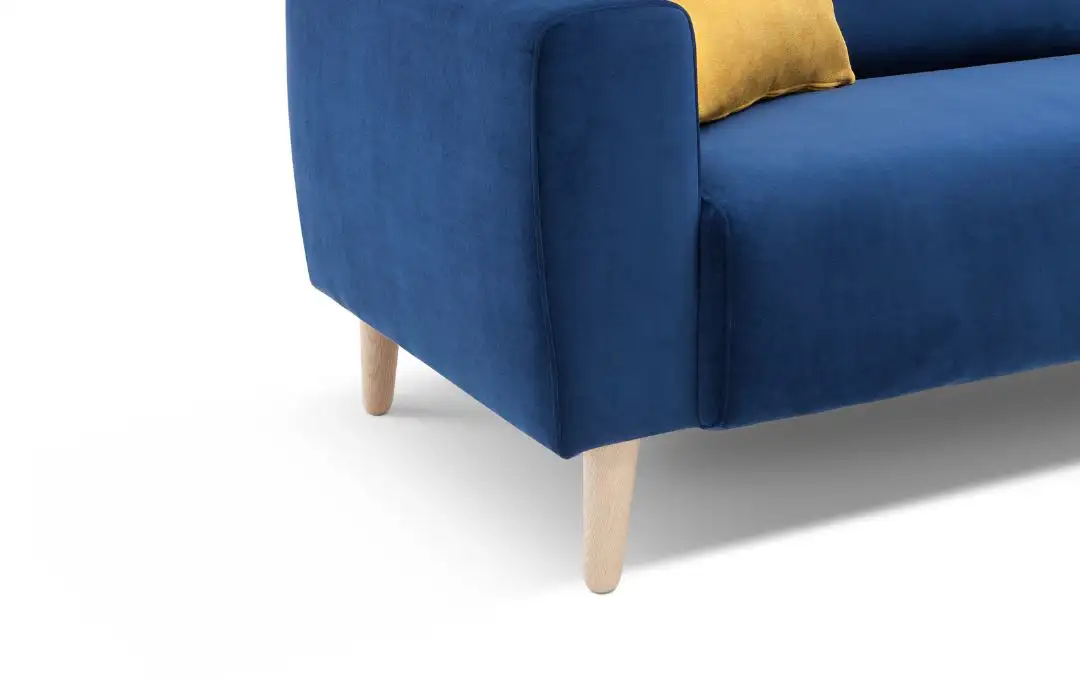
Comfortable with cushions: Maximising comfort with cushion choices
While there aren’t as many different types of filling for sofas as there are for, say, mattresses, there are still plenty of cushion filling options to choose from. One thing to keep in mind when you buy sofas is that firmer sofas don’t necessarily equal more durability, so if you’re someone who prefers a softer style, that doesn’t mean you have to sacrifice quality.
Foam
Foam, usually wrapped in a layer of polyester for extra resilience, makes up the vast majority of sofa cushions, although memory foam occasionally makes an appearance, especially in sofa beds.
Down
Goose or duck feathers can sometimes be found in extra-luxe sofas. However, the softness of the down means you’ll need to plump and fluff it often, although you can opt for a 50/50 blend for a bit lower maintenance. Folks with feather allergies should probably avoid this option.
Innerspring
A coil spring core like that found in a mattress is sometimes used for sofas that don’t have removable seat cushions. As with mattresses, when opting for an innerspring sofa the most important thing to test is whether there are squeaks or bumps when you sit down.
Popular sofa types, designs, and styles
Let’s talk about popular sofa types and styles (let’s be honest, it’s much more fun than learning about suspension springs). Obviously, when you buy sofas, you want one that is going to be comfortable for years of lounging, but you also want one that looks good, too!
There are so many different sofa designs, styles, and types that we could write a whole guide just talking about Chesterfields versus chaises (stay tuned) but for now we’ll run through some of the most popular types, design types, and styles that you may be considering.
Sofa types
Standard sofa
A standard sofa is what probably comes to mind when you think of a couch: two arms, a cushioned base, space for you and one or two others, or for you to stretch out at length.
Loveseat
A loveseat is a smaller, more petite version of a sofa, with just enough room for two people. However, it can also be a great way to cuddle up with a partner, friend, child, or even a pet (or two, if they’re small).
Corner sofas and modular sofas
Then there’s the sectional or corner sofa. The corner sofa can be anything your heart desires. By buying corner sofas with a modular design, you can add or subtract pieces and size them up and down for your needs.
It can be similar to a standard sofa or large enough to seat a crowd, making it ideal for both smaller and larger spaces. This is also often the option you’ll turn to if you want an L- or U-shaped sofa (although you can find non-modular pieces in the corner shape as well).
Chaise longue sofa
A chaise longue is an elongated, upholstered seating piece that combines the features of a chair and a daybed. It typically has a backrest on one end and is designed for lounging and relaxation, allowing users to stretch their legs comfortably. All you need is someone to feed you grapes!
Recliner sofa
The comfiest of all couches, it may not always be the most elegant pick, but a recliner sofa is certainly the cushiest. This sofa reclines, either manually or with a powered motor, to let you lie back and lounge. Buy sofas that recline for the ultimate in cosiness in your sitting room or den.
Sofa bed
A sofa bed is a clever and versatile combination of a sofa and a bed that instantly provides a comfortable sleeping space. A sofa bed is essentially a sofa that can be converted into a bed. They are an ideal choice for everyday use in small apartments, guest rooms, or games rooms.
Sofa designs
Chesterfield
Tufted along the back, arms, and sometimes seat, the Chesterfield is traditionally upholstered in leather and often has a lower back and high arms, sometimes at equal heights. Buy sofas in this style for classic elegance.
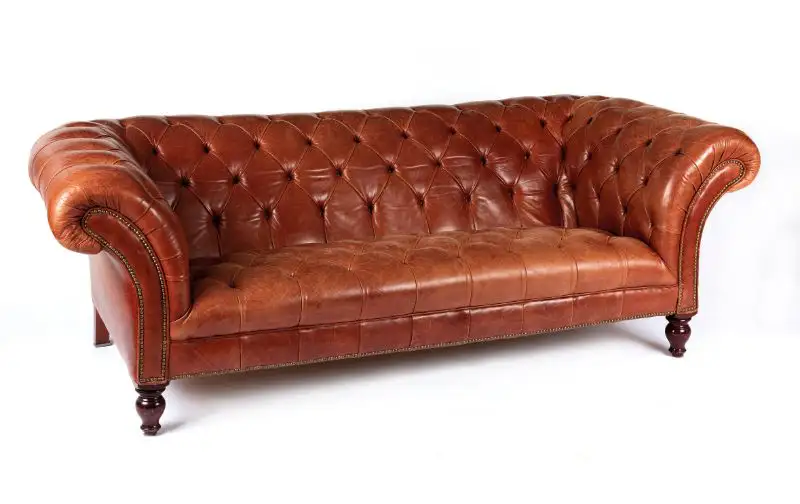
English roll-arm
The English roll-arm sofa has, as the name suggests, low rolled arms with a higher back. Although the upholstery is fairly tight, it has a good amount of cushioning, and when you buy sofas like this, you’re assured of a comfortable yet sophisticated pick.
Lawson
Picture a couch. The first thing that popped into your mind was probably a Lawson. These classic sofas are designed for comfort. The back and seat of the sofa are rows of cushions that are separate from or loosely attached to the frame.
Tuxedo
The tuxedo sofa has high arms that are level with the sofa back, which is straight with no reclining angle, creating an elegant, modern look. It is sometimes tufted like the Chesterfield.
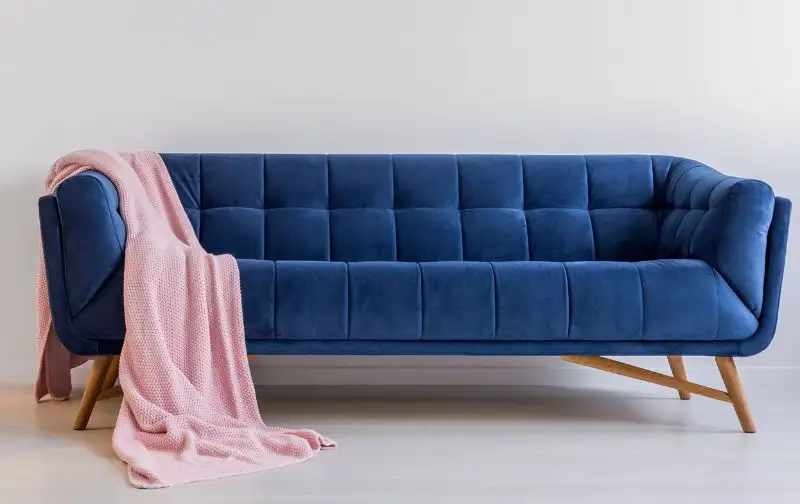
Camelback sofa
The Camelback sofa, often considered the stylish chameleon of the seating world, boasts a distinctive silhouette that exudes both elegance and whimsy. Displaying a gracefully arched back, flanked by two peaks reminiscent of a camel’s humps, this sofa makes a bold statement and easily becomes the focal point in any room.
Sofa styles
From the streamlined, minimalist designs of Scandi-style sofas to the sleek, iconic silhouettes of Mid-century Modern pieces, choosing a sofa is a thrilling journey through a vast landscape of diverse and captivating styles. You can learn all about those sofa styles in depth in our sofa styles guide.
Mid-century Modern sofas
Mid-century Modern sofas are what we consider time capsules of a groovy era, that infuse your living space with a vibrant blend of style and comfort. With clean lines, organic curves, and a dash of space-age flair, these sofas are the ultimate homage to the golden age of design.
Contemporary sofas
Contemporary sofa designs, the avant-garde darlings of the furniture world, will whisk your living space into a realm of sleek sophistication. Embracing minimalism with their chic silhouettes and innovative materials, these sofas showcase a mastery of form and function.
Traditional sofas
Embrace the timeless elegance of traditional sofa designs, where plush cushions rendezvous with ornate woodwork and intricate details. These classic beauties transport your living space to a bygone era of opulence and refinement. There’s nothing quite like settling into the warm embrace of a traditional sofa, and letting its classic charm transport you to a world of cosy sophistication.
Minimalist sofas
Minimalist sofa designs, the zen masters of seating arrangements, transform your living space into a haven of simplicity and serenity. Boasting clean lines and a “less is more” philosophy, these sofas provide the perfect canvas for showcasing your carefully curated style.
Scandi sofas
Curl up on a Scandi sofa, and let its hygge-inspired charm envelop you in a warm embrace, transporting you to a world where clean lines and snuggly blankets reign supreme.
![]()
![]()
![]()
![]()
![]()
![]()
![]()
![]()
![]()
![]()
![]()
![]()
![]()
![]()
![]()
![]()
![]()
![]()
![]()
![]()
![]()
![]()
![]()
![]()
![]()
![]()
![]()
![]()
![]()
![]()
![]()
![]()
![]()
![]()
![]()
![]()
![]()
![]()
![]()
![]()
![]()
![]()
![]()
![]()
![]()
![]()
![]()
![]()
![]()
![]()
![]()
![]()
![]()
![]()
![]()
![]()
![]()
![]()
![]()
![]()
![]()
![]()
![]()
![]()
![]()
![]()
![]()
![]()
![]()
![]()
![]()
![]()
![]()
![]()
![]()
![]()
![]()
![]()
![]()
![]()
![]()
![]()
![]()
![]()
![]()
![]()
![]()
![]()
![]()
![]()
![]()
![]()
![]()
![]()
![]()
![]()
![]()
![]()
![]()
![]()
![]()
![]()
![]()
![]()
![]()
![]()
![]()
![]()
![]()
![]()
![]()
![]() Budgeting and price considerations
Budgeting and price considerations
In this section, we will examine the crucial aspect of budget and price considerations when selecting a sofa. We will explore the price ranges for various sofa types and materials, discuss the factors that influence sofa prices, and provide helpful tips to find the best deals.
Price ranges for various sofa types and materials
In the quest for the perfect sofa, understanding the diverse price ranges for various sofa types and materials is key. Different styles and designs, from minimalist to traditional and from cabrioles to chesterfields, combined with the array of materials available such as leather or fabric, all contribute to the wide range of costs you may come across. By familiarising yourself with these variations, you can make an informed decision that meets both your style and budget preferences.
Additional factors affecting sofa prices
Sofa types, designs, and materials aren’t the only factors that affect sofa prices. The quality of construction, design complexity, and brand reputation all play a role in determining the final cost of your new sofa. By examining these factors, you can better assess the value and longevity of your investment, ensuring your chosen sofa meets your expectations.
Tips for uncovering the best deals
Lastly, a few savvy tips for finding the best deals can make all the difference. Keep an eye out for seasonal sales or discounts from trusted local and online retailers like yours truly if you want to snag a stylish sofa at a reduced price. If the budget is limited, explore the world of secondhand or vintage furniture, as it can lead to unique finds and exceptional deals. With a little resourcefulness and a keen understanding of your budget, you’ll be well-equipped to discover the ideal sofa that seamlessly combines style, comfort, and affordability.
Making Your Final Decision
This final section will walk you through the process of making your final decision when purchasing a sofa. We will go over important steps like test sitting and comfort evaluation, evaluating the piece’s quality and craftsmanship, and considering warranty and return policies. For extra confidence in your decision, you can also take a look at our handy checklist for sofa buying here.
Test sitting and comfort evaluation
As you embark on the thrilling adventure of choosing which sofa to surrender to, prepare to test the waters, quite literally, by sitting and evaluating the comfort of your potential new sofa. Channel your inner Goldilocks as you assess the perfect blend of cushion firmness and support, ensuring your future lounging experiences are nothing short of divine.
Evaluating quality and craftsmanship
Don’t forget to put on your detective hat and scrutinise the quality and craftsmanship, verifying that your chosen sofa is built to last.
Warranty and return policy considerations
Lastly, navigate the fine print of warranty and return policy considerations, arming yourself with the knowledge and confidence to make a well-informed decision. After all, this is the grand finale – the moment you and your sofa are destined to unite in a harmonious blend of comfort and style. Simply bliss!
Our Ultimate Guide to Buying a Sofa has equipped you with the essential knowledge and insights needed to navigate the vast world of sofa options with confidence and finesse.
From understanding various styles, materials, and construction techniques to considering factors such as comfort, functionality, and budget, this comprehensive guide has your back.
As you embark on your sofa-buying journey, remember to prioritise your personal preferences and lifestyle needs, and keep in mind the importance of evaluating quality and comfort. With all of this newfound wisdom at your fingertips, you are now ready to go forth and conquer the sofa market and find that perfectly stylish and comfy couch for your living space. Happy sofa hunting!
